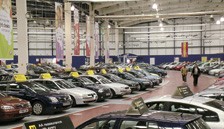As the market shows signs of plateauing it is perhaps inevitable that an element of caution is creeping into the dealer sector.
This year’s unprecedented rise in trade values has been both a welcome break from rapid forecourt depreciation and a serious challenge to profitability for dealers.
While having appreciating forecourt stock is a welcome change the overall shortage has actually proved costly in many cases.
The internet has enabled many customers to focus almost exclusively on price and playing off dealers against each other is now commonplace.
Consequently, retail margins have not risen in line with trade values. And the need to acquire sufficient stock to maintain an attractive offering has frequently forced dealers to buy cars which require more reconditioning than normal.
There seems to be little evidence of any change in the supply picture, with auction stock levels still extremely low. One used car distribution facility visited by CAP last week normally has up to 17,000 cars in place at any one time. There were 3,000 and all were already spoken for.
In the franchise dealer sector there is now a focus on new plate deliveries and research suggests order books look significantly improved, although this is believed to be in large part due to scrappage. So stronger new car sales is not automatically leading to more part-exchanges.
Independent dealers are reporting some reduction in footfall and increasingly complaining that values are unsustainably high, in terms of the impact they are having on profitability. There is some concern among larger group buyers over the prices paid for stock and how that will pan out when the vehicles approach the overage point and require to be liquidated.
Although there is no hard evidence that values are about to reduce, fear of this is growing in some quarters. Although the risk is hugely diminished in the current prevailing conditions, the fear of exposure to expensive and overage forecourt stock during the coming autumn and winter is still felt keenly.














Login to comment
Comments
No comments have been made yet.